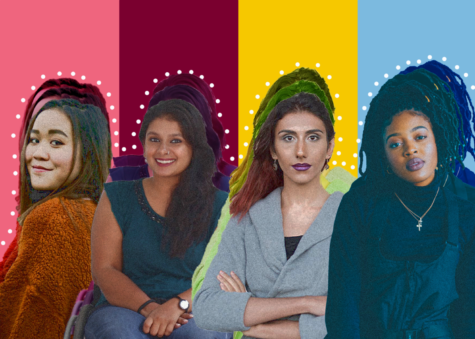Without intersectional feminism, advocacy does not represent all women
March 16, 2022

The first result that pops up when someone googles the term feminism is that it is a noun meaning “the advocacy of women’s rights on the basis of the equality of the sexes.” This gives the impression that all women are currently at the same societal tier in all aspects of their lives.
This is an impression that is gravely untrue.
In a country as diverse as the U.S., the use of sex alone as a grouping factor in the fight for human rights is unfair. The umbrella of feminism and women’s rights, in a fairly wealthy country where white people hold the population majority, tends to leave the individuals outside the white upper-middle-class category out in the rain.
Feminism does not live up to its purpose if this umbrella is not expanded to include all women.
This exclusionist flaw in the system gives rise to the importance of intersectionality. Intersectionality aims to acknowledge the unique experiences of discrimination and oppression faced by each individual. This includes sex, appearance, race, socioeconomic status and anything else that shapes a person’s experience in society and how they are treated.
Beginning with sex, men clearly have a societal advantage over women in patriarchal systems like the one present in the U.S. However, the category of women contains numerous power imbalances as well. The starkest being race.
The advantage that white women have in society is clearly visible over that of women of color. This prejudice exists to the extent that it’s not just white women but white features that are preferred over that of other racial minorities. In fact, many white-passing women of color or women who do their hair in a very European way seem to be treated in a higher regard than the minorities with very ethnic features and mannerisms.
Socioeconomic status also plays a very defining role in an individual’s experience. A person’s status is determined by education, income and occupation. An Asian family living in a mansion in Beverly Hills, California are going to have different struggles compared to an Asian family living in the southside of Chicago. America being a capitalist economy further roots the importance of a person’s socioeconomic status.
Sex, race and socioeconomic status are the big three dividing boundaries perpetuated by society, but they are not the only three.
Other categories like physical disabilities, mental health, sexuality and gender are not often brought to the table but strongly affect the lives of individuals who hold disadvantages due to these factors.
Being able-bodied without a mental disorder is a privilege that most people overlook. Many physical and mental disabilities present differently in men and women and therefore need to be treated differently.
Women generally have greater mobility limitations due to old age compared to men, high-functioning girls with autism are often called “lost girls” or “hiding in plain sight” because they’re overlooked or diagnosed late and these issues are just scratching the surface.
Since the medical system seems to be more concerned with treating men, symptoms for similar issues are overlooked in women. Such is frequently seen in the diagnosis of heart attacks because angiograms are better suited to survey male arteries than the smaller arteries that women have.
Currently, 7.1% of Americans identify with a sexuality that is not heterosexual. This percentage has been steadily going up since 2012 and is projected to continue this incline into the future. These millions of people, many of them women, face several forms of homophobia that needs to be addressed under feminism, women’s rights as well as gay rights.
A group of individuals that are often excluded from the category of women are trans women. Although they are born male or intersex, they have always felt like women and many of them have gone through surgeries, hormones and procedures to present as women as well. Therefore, not including trans women under the feminism umbrella, would not be inclusive of all of women.
In order to practice feminism in a way that is inclusive of all women, it is vital that one does it intersectionally and with an open mind to the constant evolution of who and what is included under the feminist umbrella.






















Leave a Comment